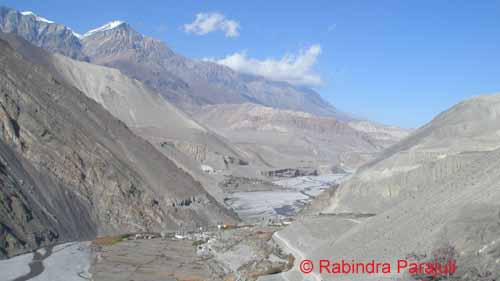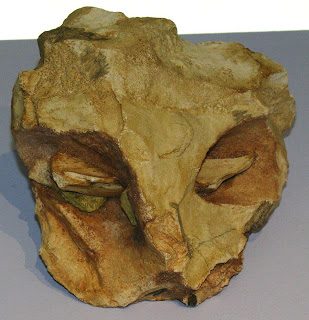Yet, this does not explain why the central characters are all willing to accept the fate that has been presented to them. It is true that they are told from the earliest age that they are something special, something precious that is in many ways a gift – a gift they carry in (as) their bodies and that they will eventually be able to share with someone else (or a number of people) through the donation of their body parts. We could chose to stop with this interpretation and see the film (and novel on which it is based) as a kind of allegory on the nature of human love and sacrifice.
For a sociologist, however, the uncomfortable question of the donors’ acceptance of their fate remains, albeit in a different form, and in the shape of a different allegory. This relates to the following question: how, in this dystopia, do they remain tied to the power of the state? As it is indeed the state that is the unspoken presence in the film: what, after all, sanctions and governs the process of donations? We only get a hint of it visually through the bleeping box on the wall that all the clones must scan their wristbands on as they leave and enter their homes. Such a form of power needs to be explored and explained, because the donors find it impossible to run away from the system that condemns them to an early death. More than this though, from a sociological perspective, we may be interested in what this might say about our own relations to state power and our willing acceptance of subjugation and inequality.
So why do people act in ways that are objectively against their own interests? One explanation might be ideology. A classical Marxist perspective would suggest that people suffer from ‘false consciousness’ that is the result of powerful ideas fed to them through the structures and practices of society, including for instance education. We see this early on in the film, when the children are at the boarding school; both overtly through the song they sing in morning assembly and more subtly through the image of the small pill cups that accompany their bottles of milk (a pharmacological metaphor for state control). But false consciousness does not account in any clear way for the actual actions of people in the real world – they are rather simply positioned as ‘cultural dupes’ who have been conned into behavior determined by the puppet masters of the dominant, ruling classes. In this view, the state rules with iron certainty, and people are ‘drugged’ into a state of obedience through ideas. Individuals can only escape if they have their false consciousness removed and replaced with a vision of ‘how the world really is.’ This is fine, as far as it goes, but people are not really able to do this for themselves, and must be instructed in some way, ultimately through political revolution. Thus, ideology is the only true power that is recognized; individual people are rendered effectively powerless under its spell.
The theory that was meant to supersede and improve on ideology was ‘hegemony’, as argued, for example, by the Italian Marxist, Antonio Gramsci. With the theory of hegemony we see the dual aspect of coercion and consent. So now in addition to the power of the state, we have a sense that people act in some way to continue their own domination; they are not simply coerced but productively consent to this state of affairs. So the donors, instead of trying to escape the system of donations altogether, try to change it and find exceptions – like the mythical ‘deferrals’ – thereby giving the system legitimacy and working to keep themselves the subjects of its domination. This means that there is now a newly found symmetry to power – power is held by both the state and the individual and exists as a relation between them.

This might well leave us quite depressed! But there is an alternative idea: it comes through a form of anarchism that has been explored by the political theorist Saul Newman. If we accept, as hegemony suggests, that our acquiescence to power also constitutes that power, then we might start by looking at desire as opposed to politics as such. This isn’t a rejection of politics but a new way of constituting what the political actually is. It means understanding how – in the case of the clones for example – people become bound to state-definitions of types of citizenship, like ‘donor’. This is the bond of voluntary servitude that sustains state dominance, and it means realizing that people actually desire and wish for their own subjugation. People willing give up their real freedom because the state provides tantalizing, tempting ways of thinking that give the apparent freedom of individualization – such as the way capitalism constantly produces new ways of looking, acting, consuming and so on that make us believe we must constantly up-date ourselves (even though we might know, at some level, this is all just a con). In Never Let Me Go, for instance, becoming a ‘carer’ represents a minor compensation for the humiliation of domination: this is an excellent example of how obedience is assured through a tiny shred of power derived from the state.
How could we use this notion to think otherwise about the fate of the donors? On face value it might seem very close to the idea of hegemony. However, where it makes a crucial departure from Gramsci’s ideas is in seeing servitude as something of our own creation and, consequently, we become the site for radical change and not the state. So instead of revolution, which aims at the Political, we (and the clones) could build on the notion of voluntary servitude to look towards an alternative: namely, insurrection. Insurrection is a form of micro-politics that rejects tyrannical power and aims to liberate the individual through a dis-identification with the state. Its fundamental difference is that it imagines political action beginning from the individual, through new techniques and practices of doing selfhood (in the case of the donors’, a refusal of their state defined fate and a claiming of a new form of post-state citizenship). This involves a very different perspective of human nature to that which has informed mainstream modern Western political theory, as it questions the very legitimacy of the state, rather then trying to assert its inevitability.
This isn’t to say that people can simply wish themselves out of their circumstances. It is, though, a means for imagining how radical spaces could be found for what the French poststructuralist Michel Foucault called ‘indocility’ and ‘inservitude’ – the refusal of power’s domination over our selves. The fact that state forms of power rely inherently on the complicity of individuals demonstrates their inherent weakness; something neither ideology nor hegemony truly account for. In sum then, yes, it is productive to read Never Let Me Go as an allegory for love and the desire for corporeal escape through some truly romantic and spiritual experience; but it is also highly productive to consider this narrative as an expression of how people experience – and ultimately succumb to – a short life of voluntary servitude.









